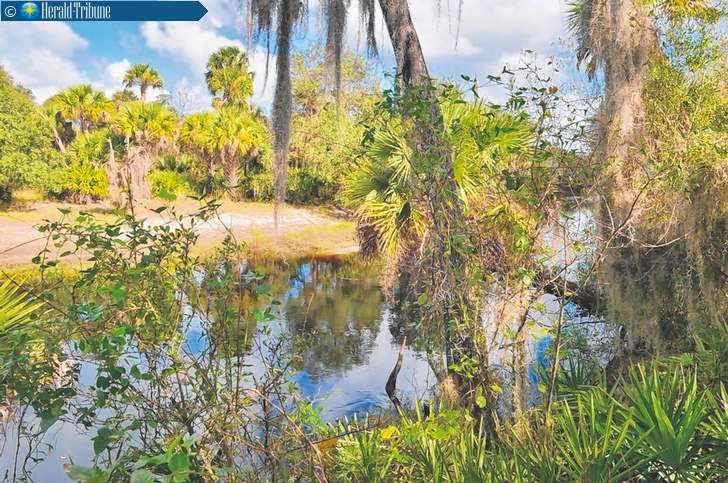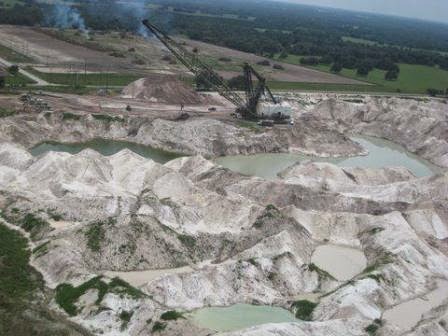Sierra Club Florida's Phosphate Committee Reports on Mining Activities

Peaceful Horse ranch. Source: Herald Tribune.
Over the last few years Sierra's Phosphate Committee has actively participated in the permitting process for several phosphate mines. Sierra appealed the US Army Corps of Engineers' (Corps) permit for the South Fort Meade mine and after much legal activity achieved an important settlement with Mosaic. Mosaic set aside land along the Peace River in conservation and purchased the Peaceful Horse Ranch at the confluence of the Peace and Horse Creek for donation to the state for conservation and recreation. That donation should be completed shortly.
The Phosphate Committee was also active in the Corps' preparation of an Areawide Environmental Impact Statement (AEIS) for phosphate mining in the Bone Valley, filing multiple sets of comments and providing expert submissions on issues such as economics, wetlands and water impacts.
While the Committee has been deeply disappointed in the final AEIS, it has continued to urge the mining companies to provide more preservation for their mining activities. Recent meetings with Mosaic have focused on the Ona mine, with the Committee pointing out areas for additional preservation and protection for wildlife corridors and watershed protection. These discussions have resulted in significant improvements at Ona, including:
■ 2,222 additional acres of preservation focusing on Horse Creek, the West Fork of Horse Creek and other onsite stream systems.
■The preservation of a large wetland system in the center of the site that had originally been planned for a clay settling area.
■ Changes in mining procedures which will involve mining one side of a creek system and completely reclaiming it before mining the other. This change will maintain wildlife corridors during mining and will aid in protecting water flows. Changes in reclamation plans will result in more complex and more natural post-mining systems and the commitment to reclaim before mining the second side will guarantee timely reclamation, a continuing concern of environmentalists.
■ Offsite mitigation projects to include a bayhead restoration demonstration, restoration of Payne Creek in Polk County from a ditch (allowed under past reclamation protocols) to a natural stream and restoration of the area at the confluence of Bowlegs Creek and the Peace River. These last two projects will begin to repair reclamation projects approved under prior regulatory regimes which Sierrans have long argued were insufficient.
■The preservation areas will be designed to connect to preservation areas adjacent to Ona, for example, to the CF South Pasture Extension mine to the north and to potential mining areas to the south in DeSoto County. These connections, which will follow streams and connected wetland systems, will act to protect water flows and provide extended wildlife corridors.

The improvements in the Ona mining plan do not mean that Sierra approves of phosphate mining. Indeed, the AEIS, flawed though it is, clearly revealed the great damage caused by mining that Sierra and others have complained about for years. Recognizing, however, that the Corps is determined to permit mining, the Phosphate Committee has worked to push for protections for streams and wildlife corridors and is supportive of the improvements made by Mosaic to the Ona plan. Sierra will continue to work to ensure that the Corps includes strong provisions in its permits to require that reclamation occurs promptly, that failures in elements such as water flows, water quality or similar issues are corrected through enforceable adaptive management and that the Corps and other responsible agencies undertake active enforcement of permit protections.
The opportunity to repair past mistakes through well-thought out mitigation projects in areas previously impacted by mining is important as well. We have learned that unless we tell the regulators and the mining companies what their environmental protection priorities need to be they don't get it, with the result that they continue to bless unconnected projects and mitigation banks far-removed from the mining damage.
Sierra Club Florida continues to work to educate the public about the real impacts of mining and is very pleased that its Manatee/Sarasota Group has recently applied for and received an $8,000 grant from the Grassroots Network of Sierra Club to do just that.
The Chapter ExCom applauds the initiative and commitment of Manatee/Sarasota as well as other Groups and individuals who have devoted so much energy and effort to the phosphate mining problem.
Sierra is committed to a multi-level, multi-tool and practical response to mining, including education, research, expert input, regulatory participation, discussion and where appropriate, litigation.
Authored by Phosphate Committee members Percy Angelo, Marian Ryan, and Bev Griffiths.